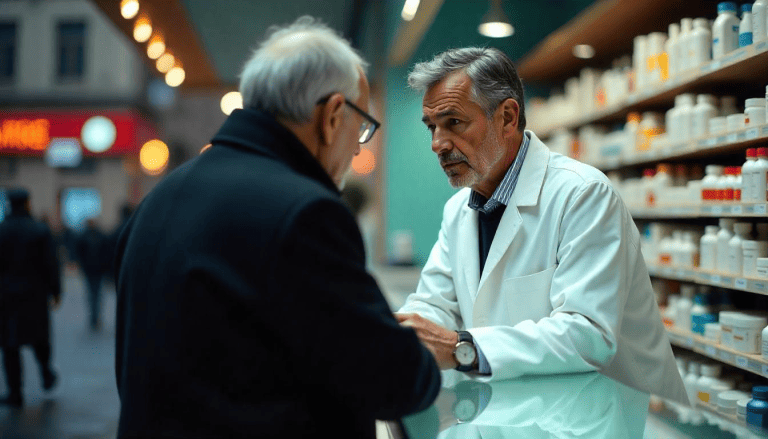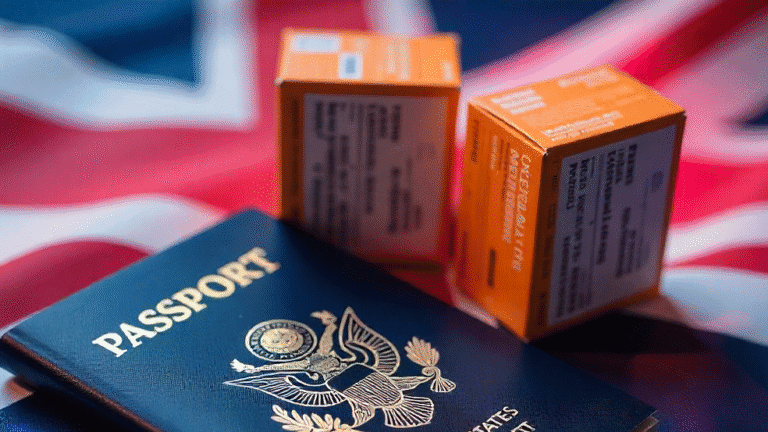Banned Medications Around the World: Avoid Trouble

On a trip to Japan a few years ago, my neighbor made a mistake that many travelers make: She didn’t research whether her medication was allowed. She packed her prescription decongestant, thinking it was just a harmless cold remedy, only to have it confiscated at customs.
It turned out that the medication contained pseudoephedrine, which is strictly prohibited in Japan. She ended up spending the first few days of her trip scrambling to find a local pharmacy for an alternative.
This guide lists some of the more common banned medications around the world to will help you avoid situations like hers. Whether you’re packing prescription drugs, over-the-counter medications, or supplements, understanding the rules and taking a few extra steps can ensure a smooth journey. You’ll learn how to research regulations, prepare your medications, and avoid unnecessary stress.
1. Medication Restrictions: What Every Traveler Must Know
Travelers often underestimate how serious customs officials can be when it comes to medication restrictions. Even if your medication is for a legitimate medical condition, carrying a banned substance can result in confiscation of your medication (leaving you without treatment during your trip), fines or legal penalties that can be severe in countries with strict drug laws, and in rare cases, detention or arrest for carrying prohibited substances.
Medications that are perfectly legal in one country may be heavily restricted or outright banned in another. These differences are due to variations in laws, cultural norms, and public health policies. Understanding why certain medications are banned will help you better prepare for travel and avoid unpleasant surprises at customs.
1.1 The Most Dangerous Medication Categories for Travelers
Stimulants and ADHD Medications are among the most problematic for international travel. Japan has some of the strictest medication regulations in the world, completely banning stimulants like Adderall and Ritalin even with a valid prescription. To bring any medication into Japan, you need an import certificate from the Ministry of Health, Labour, and Welfare—a process that requires submitting extensive documentation about your prescription and medical condition well in advance of travel.

Narcotic Painkillers present serious risks across multiple regions. Morphine is banned outright in some countries, while others allow it only with extensive pre-approval documentation. Countries in the Middle East, including the UAE and Saudi Arabia, enforce zero-tolerance policies for narcotics and require travelers to obtain notarized letters from their doctors and seek pre-approval from destination health authorities. Even common painkillers like Tylenol with codeine can result in detention in countries like Saudi Arabia.
Over-the-Counter Decongestants containing pseudoephedrine are banned in Japan and Korea because the ingredient can be used to manufacture methamphetamines. This affects common medications like Sudafed that millions of travelers consider harmless.
Cannabis-Related Products face blanket prohibition in many countries. Even non-psychoactive CBD oil with no THC is strictly illegal in Singapore, the UAE, and other nations where all cannabis products are banned regardless of their therapeutic properties.
Codeine-Containing Medications are classified as narcotics throughout the Middle East and parts of Africa. This includes many cough syrups and pain relievers that are readily available over-the-counter in Western countries but require special documentation or are completely prohibited elsewhere.
1.2 Why Countries Ban Medications
Public Health Protection drives many restrictions. Some Asian countries ban certain antibiotics to combat antibiotic resistance, while high-dose ibuprofen (over 400mg) is restricted in the UAE and Middle Eastern countries due to safety concerns.
Cultural and Legal Attitudes significantly influence medication policies. Countries with strict drug policies, particularly in the Middle East, tightly control medications that alter mental states, including antidepressants and anti-anxiety drugs that are commonly prescribed elsewhere.
Preventing Illegal Manufacturing explains why seemingly innocent ingredients are banned. Pseudoephedrine restrictions exist because the substance can be diverted to produce illegal drugs, making legitimate cold medications potential contraband.
Addiction Prevention motivates the strict control of narcotic painkillers and sedatives. Mexico focuses its restrictions on morphine and strong sedatives, requiring travelers to declare all prescription medications at customs and provide doctor’s letters with original pharmacy-labeled containers.
1.3 High-Risk “Strict” Countries and their Requirements
See section 2.1 for how to apply for any necessary medication permits
🚨 ❗️ Japan requires import certificates for most prescription medications and completely prohibits stimulants and pseudoephedrine-containing products. The approval process is lengthy and requires extensive medical documentation.
🚨 ❗️ Middle Eastern Countries (UAE, Saudi Arabia) demand pre-approval from health authorities for most prescription medications, especially those containing codeine, sedatives, or any cannabis-derived compounds. Failure to obtain proper documentation can result in immediate confiscation and legal penalties.
🚨 ❗️ Singapore requires approval if you are bringing in over 240ml of codeine or dextromethorphan oral liquid preparation, controlled drugs like Morphine, Fentanyl,Oxycodone, medications that contain total ephedrine or pseudoephedrine content of more than 21.6g and psychotropic substances like Zolpidem which is commonly used for sleep.
⚠️ Mexico requires customs declaration of all prescription medications and focuses heavily on narcotic and sedative restrictions. Even medications that seem common require proper documentation to avoid delays or confiscation.
⚠️ Australia operates under a “traveller’s exemption” system that allows visitors to bring up to three months’ supply of most medications for personal use, but prescription medicines such as morphine, oxycodone, methadone, methylphenidate, Adderall®, and benzodiazepines require valid prescriptions from doctors.
All medications containing codeine require a prescription from your medical doctor and must be declared. Australia prohibits certain substances entirely, including abortion medications (such as mifepristone/RU-486), and requires original packaging with proper labels.
Traditional Chinese medicines and herbal remedies face particularly strict restrictions—products containing ingredients from endangered plants require ‘CITES’ permits, while all herbal medicines must be declared due to biosecurity regulations and risk of containing undeclared pharmaceuticals, heavy metals, or endangered animal DNA. Weight loss products derived from Hoodia are specifically banned without permits.
🚨 ❗️ Indonesia has some of the world’s strictest drug laws with harsh penalties, such as arrest and jail time, even if you have a prescription for certain substances. All cannabis-based products, including medicinal cannabis, cannabis-based oils and creams, hemp-based products, CBD, THC, hash and edibles, are strictly illegal in Indonesia. Travelers must declare medications at customs and provide doctor’s letters explaining dosage and medical necessity for items such as codeine-based products and narcotics. You may carry only the prescribed amount for your stay.
🚨 ❗️ Thailand enforces a complex permit system for controlled substances with at least 14 days advance application required for Category 2 narcotics and no exceptions for late applications. The quantity of which shall not exceed 30 days of usage for most prescription medications, and travelers must declare controlled medications at customs’ red channel. Thailand categorizes drugs into multiple classes, with only Category 2 narcotics allowed (with permits), while other categories are completely banned.
1.4 Critical Preparation Steps
- Check Every Ingredient in your medications against destination restrictions. Multi-ingredient medications may be banned because of just one component, not the entire formulation.
- Contact Embassies or Consulates for the most accurate, up-to-date guidance specific to your medications and destination country. Many countries require advance permits (like Thailand’s 14-day minimum requirement) that cannot be expedited.
- Obtain Proper Documentation including notarized doctor’s letters, original pharmacy labels, and any required import certificates or health authority approvals—always well in advance of travel. Letters should specify medical conditions, exact dosages, and treatment necessity.
- Prepare for Advance Permit Requirements as some destinations like Thailand require online applications submitted weeks before travel with no exceptions for late submissions.
- Understand Quantity Limits which vary dramatically by country—from 30 days’ supply in Thailand and Indonesia to 90 days in others, with Australia allowing up to three months for most medications.
KEEN TIP: Even herbal remedies face restrictions—certain ayurvedic medicines containing heavy metals or specific herbs are banned in European countries, while products considered safe in Western countries may violate cultural or health regulations elsewhere.
1.5 Why This Matters
Travelers often underestimate how serious customs officials can be when it comes to medication restrictions. Even if your medication is for a legitimate medical condition, carrying a banned substance can result in:
- Confiscation of your medication, leaving you without treatment during your trip.
- Fines or legal penalties, which can be severe in countries with strict drug laws.
- In rare cases, detention or arrest for carrying prohibited substances.
KEEN TIP: Even common painkillers like Tylenol with codeine can land you in trouble in countries like Saudi Arabia. Always check the active ingredients before packing.
2. How to Research Medication Rules for Your Destination
Researching medication restrictions for your destination is an essential step in preparing for your trip. By knowing what’s allowed and what isn’t, you can avoid unnecessary stress at customs and ensure you have access to your medications throughout your journey.
2.1 Official Country and Embassy Websites
To verify whether your medication is permitted, consult official government and customs resources.
- Country websites: These often include lists of restricted or prohibited substances. For example:
- Japan: Japan has some of the strictest medication regulations in the world. Stimulants like Adderall and Ritalin are entirely banned, even with a prescription. Certain over-the-counter medications, such as those containing pseudoephedrine (found in common decongestants), are also prohibited. The Ministry of Health, Labour, and Welfare outlines what is banned and what requires a permit; allow 4-6 weeks to apply for and receive a permit.
- Australia: The Therapeutic Goods Administration (TGA) provides advice on bringing medicines into the country.
- Indonesia: The Indonesian Embassy in Canberra and the Indonesian Embassy in Copenhagen and Denmark advise travelers on doctor letters and what is illegal to bring.
- Singapore: Apply to the Health Sciences Authority at least two weeks before you depart for permits to carry codeine, controlled drugs, otc decongestants and psychotropic drugs
- UAE: The Ministry of Health and Prevention lists prohibited substances, including codeine and CBD oil.
- Embassies and consulates: If the customs website for your destination isn’t clear, reach out to the country’s embassy or consulate in your home country. Embassy staff can provide up-to-date and accurate information on medication regulations.
- Find contact details for embassies worldwide through the U.S. Department of State.
Checking these resources ensures you are getting official, accurate guidance directly from the authorities.
2.2 What to Look Up Online
If you’re struggling to find official resources, using the right search terms can point you in the right direction. Here are some effective ways to search:
- “Medication restrictions in [country]”
- “Customs regulations for [medication name] in [country]”
- “Can I bring [medication name] into [country]?”
- “[Country] banned medications list”
- “[Medication name] travel rules [year]”
For example, if you’re traveling to Japan and want to know whether Adderall is allowed, searching “Can I bring Adderall into Japan 2024” can lead you to official sources or forums where travelers discuss their experiences. But be careful: User-generated content can be helpful but may not always be accurate or up-to-date.
KEEN TIP: When using forums or third-party sites, cross-reference the information with official resources.
2.3 Additional Steps for Research
Sometimes, regulations can be unclear, or your medication may not be explicitly listed. If you still have questions:
- Contact your airline: Airlines often have additional policies for traveling with medications, especially controlled substances. They may provide helpful tips for navigating customs at your destination.
- Check with international travel clinics: Clinics specializing in travel medicine often have knowledge of medication regulations and can advise you on your specific needs.
KEEN TIP: Take screenshots of important regulations or save them as PDFs on your phone so you can access them offline.
3. Preparing to Travel with Medications
Being well-prepared before your trip can mean the difference between a smooth journey and unnecessary hassles at customs. These steps will help you travel with your medications confidently.
3.1 Create and Carry a Medical Passport
A medical passport is an invaluable tool for travelers. It is not a real passport but a list of all the medications you are bringing, their generic names, dosages, and your medical conditions. It provides clarity for customs officials, reducing the chances of misunderstandings.
To Create a Medical Passport:
On a sheet of paper, list
🟢 Your full name, date of birth, blood type, allergies
🟢 A list of your medications (with generic names), dosages and frequency of use.
🟢 Past surgeries
🟢 Your medical conditions
🟢 Your doctor’s contact information
🟢 Your emergency contact name and phone number
👉 Add any required doctor’s letters that list the medication you must take and what condition it treats. 👉 Place these in your wallet and on your phone as they will also be invaluable in a health emergency. Paramedics are trained to check for health information in those two spots.
👉 If you are traveling to a non-English-speaking country it may pay to have this letter professionally translated to the language spoken at your destination.
The medical passport protects you in a health crisis. A doctor’s letter and prescriptions for medications you are carrying that are controlled or restricted at your destination; show these to customs agents if they question you.
3.2 Packaging Medications Safely
The way you pack your medications is just as important as having the right documents.

- Keep medications in their original containers with pharmacy labels intact. This ensures customs officers can verify the medication’s name and dosage quickly.
- Use resealable plastic bags to organize your medications and make it easier to present them during security checks. Plastic bags also protect against accidental spills in your luggage.
- Bring only the amount of medication you’ll need for the trip, plus a few extra days’ worth as a precaution. Carrying too much can raise suspicion, especially if the medication is a controlled substance.
3.3 Declaring Medications at Customs
Declaring medications at customs might feel intimidating, but honesty is the best policy.
- Many countries require travelers to declare prescription medications on customs forms. Be sure to fill out these forms accurately and indicate what you are carrying.
- If you have controlled substances with you, provide any permits you have obtained to the agent.
KEEN TIP: Pack a backup supply of essential medications in your checked luggage. I always pack a week’s worth in my checked bag, no more, with the bulk of my medications in my carry-on.
4. What to Do If You’re Detained or Medication Is Confiscated
No matter how well you prepare, there’s always a chance that customs officials may flag your medications. Knowing how to respond in these situations can reduce stress and resolve issues quickly.
4.1 Stay Calm and Compliant
The most important thing to do if customs detains you is to remain calm and polite. Customs officials are simply doing their job, and becoming argumentative can make the situation worse.
- Politely present your documentation, including your doctor’s letter and prescription copies. Explain the medical necessity of your medication and assure them you have followed all regulations.
- If your medication is confiscated, don’t panic. Ask for a written explanation of why it was taken and request information about local options for replacing it.
4.2 Next Steps
If your medication is confiscated, there are steps you can take to ensure you’re not left without treatment.

- Contact your embassy: Embassies can provide critical assistance, including finding a local doctor or pharmacy, advising on local regulations, and, in some cases, helping to retrieve your medication.
- Locate a local doctor or pharmacy: In many countries, you can visit a doctor to obtain a local prescription for a similar or equivalent medication. Be prepared to provide details about your original prescription, such as dosage and active ingredients.
- File an appeal if necessary: If you believe your medication was confiscated in error, your embassy may be able to help you appeal the decision.
5. Frequently Asked Questions (FAQ’s)
5.1 Can I travel with over-the-counter medications like ibuprofen?
Yes, but high doses of ibuprofen are restricted in some countries, like the UAE. Always check the specific rules for your destination.
5.2 What if my prescription medication is illegal in my destination?
If possible, don’t bring it. Ask if your doctor can prescribe an alternative. If the medication is critical to your well-being, health, speak to someone at your destination’s embassy, as you may be able to apply for special permits through the destination’s health authority.
5.3 How do I find customs regulations for my destination?
Start with the destination country’s customs or health department website. Google search terms like “[country] medication import rules” can also help. If you’re stuck, reach out to your airline.
5.4 Do I need to carry medications in my carry-on or checked luggage?
Always carry essential medications in your carry-on. It’s not a law, it’s just a good idea. Checked luggage is more likely to get delayed or lost. There’s also the fact that temperatures are better regulated in the cabin of a plane.
5.5 Can I bring a pill organizer instead of original containers?
While pill organizers are convenient, customs agents want to see original pharmacy-labeled containers for identification. You can bring empty pill boxes and fill them at your destination if you like, but it’s good practice to carry the bottles.
5.6 What happens if customs confiscates my medication?
Request a written explanation, contact your embassy, and visit a local doctor to find an alternative. The embassy will be able to direct you to a local doctor but you can also do an online search for one.
5.7 Do I need a doctor’s note for over-the-counter medications?
If the medication contains restricted ingredients (like pseudoephedrine), a doctor’s note can prevent issues.
6. Wrap Up
Traveling with medications can be stressful, but the right preparation can make all the difference.
By researching restrictions, organizing your documentation, and understanding what to do in case of problems, you’ll avoid many common pitfalls.
Use this guide as your go-to resource for navigating the complexities of banned medications worldwide. Pair it with Flying with Medication in 2025: A Comprehensive Guide for even more detailed advice and tips.
Safe travels!






